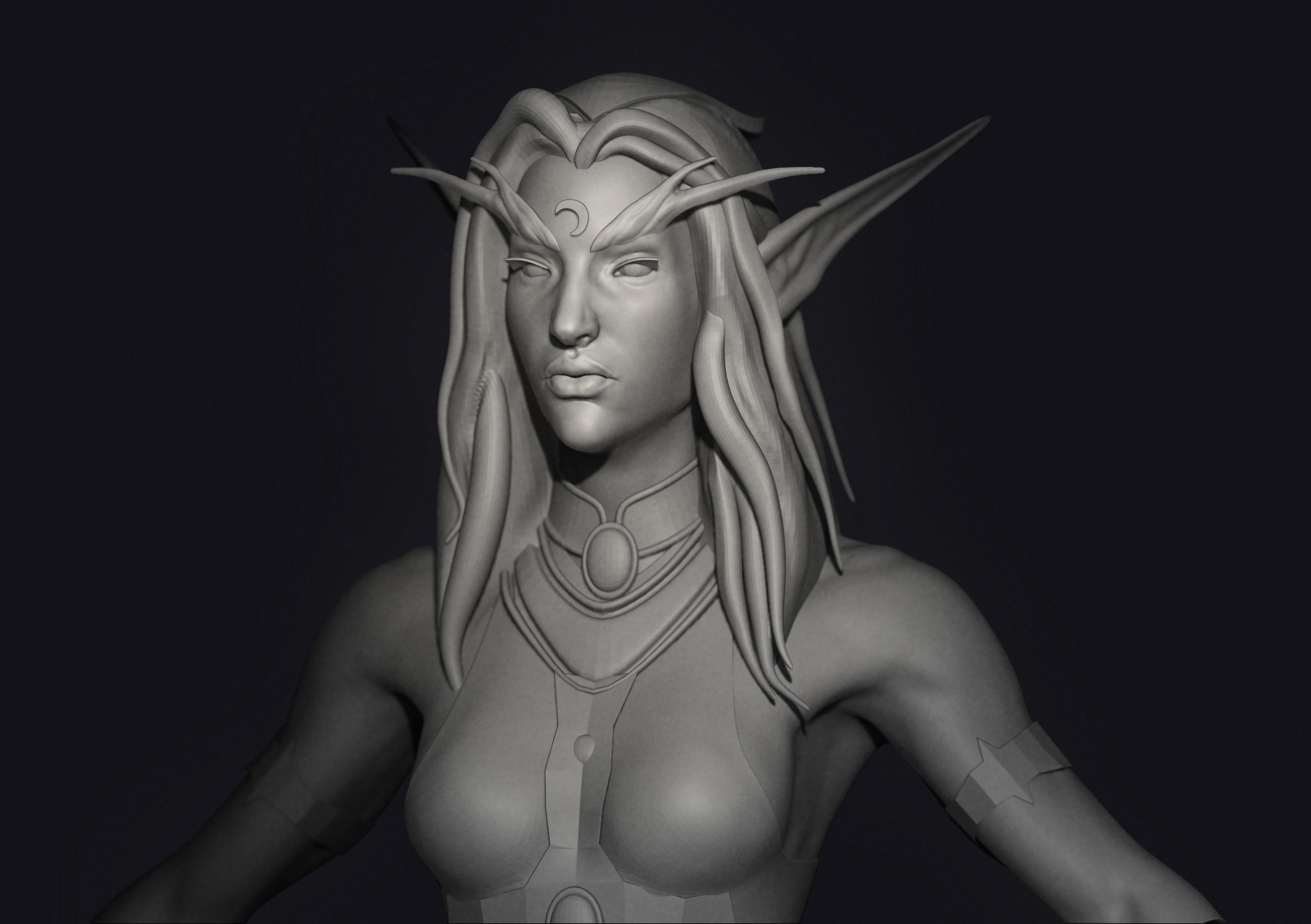The BRAWL² Tournament Challenge has been announced!
It starts May 12, and ends Oct 17. Let's see what you got!
https://polycount.com/discussion/237047/the-brawl²-tournament
It starts May 12, and ends Oct 17. Let's see what you got!
https://polycount.com/discussion/237047/the-brawl²-tournament


Replies
That said, I like your latest revision regarding her face.
I do have one thought in regards of bkost's comment. I don't think the issue is so much your colors, but instead the values. She seems to be a bit washed out with too much light values. It happens to me at times as well! A cool technique that I use, is turning my background color white. You don't need to paint with white, you just need to imply it through value range (your lightest value will always be read as a highlight when hand painting). That way, I can see where the silhouette gets lost in the background. It will help you discover your midtones once more and redefine your range. Looking forward to your next update!! This is comin out sweeeeeeeeet!
I think you're at the point where you can start considering infusing additional color variation within each of your texture sections/color blocks. If you flip through a lot of hand-painted reference, you can find some really neat texture color gradation and variety which helps boost areas of interest and contrast. This recent example from the Battlechasers development team is a solid example of this - you can see a whole mess of fantastic color shifts within the local color of various pieces such as the armor plates and the metal bits.
You don't have to get too crazy, but maybe pick one additional hue range for each color block to shift to in the areas that receive the most ambient occlusion. It is kind of a tricky process to really master, but looks great if you can swing it and it looks like you've already started tackling it in some of your previous work so you're ahead of the game.
Keep it up.
Not too sure about those three horizontal pinched lines on the back of her hair however. Gives off a solid look to what should be flowy hair.
Other than that, what Brian mentioned would improve this heaps.
Keep up the good work!